The biggest sand island in the world
It was Ingo this time who put the call out for a weekend of camping on the Tuesday night crew WhatsApp group. Who wants to join cleaning up the beaches on the biggest sand island in the world? You may have heard of it, it’s called K’gari, but is probably still better known by its old name – Fraser Island.
They do these cleanups regularly of course, but a call had been put out for extra volunteers as the floods in Brisbane and surrounding areas had resulted in a lot of additional rubbish being deposited on the sands of this stunning island. Kate (Ingo’s partner) is friends with the lady in Perth who is involved with Tangaroa Blue, the company involved with the clean ups. And so we found ourselves in the back of Ingo’s 4wd cruising to Inskip Point on a Saturday morning as we volunteered our time. It sounded like a great way to do our bit for the environment. We couldn’t bring Lara as she was at ARB (a 4wd shop) where she was getting her air compressor fitted.
We drove straight onto the sandy spit, lowered the tyre pressure somewhat (without a gauge it is hard to know exactly) and waited for the ferry to arrive which was already on its way. The small ferry packs a surprising number of cars, and despite it being quite busy we managed to get on straight away. As we were doing a beach clean up we had to register with the captain of the ship, so Kate and Jude climbed the stairs to the cockpit from where you have a great view.
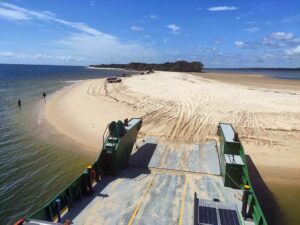
view from the top of the ferry looking back to Inskip Point where the journey to Fraser Island begins
Once the ferry arrived at Hook Point (the other side of the narrow channel) it dropped its loading dock directly on the sand again and we joined the small convoy of cars all driving onto the beach to round the corner and start heading up north. You just drive on the beach on the hard sand. This is what’s under water at high tide (during which you can’t drive on certain beach sections as there is no beach left!), so it helps to be aware of when the tides change when planning your drives to the various lakes, creeks and other tourist spots on the island. The beaches near the ferry looked pretty clean, lots of effort had already been put in here to clean up and we could tell.
One of our first stops was at Beach Camp, a backpackers hostel on the island, where we met Doug who gave us bags we could fill with all the rubbish. He also gave us a little handheld scale so we could weigh everything before putting it all in the skip bins located near the Pinnacles (coloured sand cliffs).
We tried to go to Sandy Cape (the island’s northern tip where the lighthouse is located) as we had promised Doug that we would have a look on the beaches there and report back to him about the amount of rubbish deposited. But the Ngkala Rocks bypass was very busy with lots of people getting very stuck in serious 4wd’s and we decided not to venture up that way as we would probably not have any time left to do any beach clean up. We cleaned up around the bypass and then drove back, continuing to pick up big pieces along the way as Ingo’s 4wd is a ute so we could drop them all into the tray and not worry about them stinking inside the car. We also walked along the high tide mark and into the dunes, picking up the smaller bits there. When we dropped off the rubbish we weighed the pieces and all the bags. The total amount of rubbish we picked up was 46.5kg!
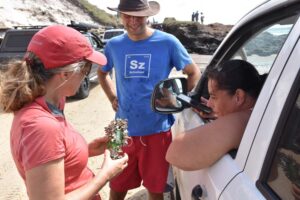
Jude finds an old glass bottle with plenty of barnacles growing on it. The cap was on, but unfortunately no sign of a message inside… you can see the cars in the background, waiting for the track to be cleared
We managed to go for a swim at least once a day during our beach cleanup stay. On the way up to our camp site in the dunes we stopped at Eli Creek, a must-visit on every trip to the island. It’s relatively shallow freshwater creek that flows fast and all the way into the ocean. When we arrived it was lunch time and very busy. To float downstream you climb onto the wooden boardwalk that winds next to the creek, offering the occasional glimpse of the crystal-clear water. At the end there are steps into the cool water and you can walk back down, swim or just float. Most people nowadays bring colourful inflatables normally used by kids, but here all ages use them. It’s so much fun and very refreshing!
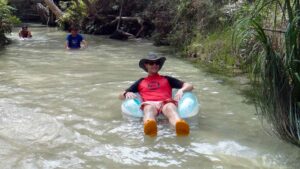
Jon floating down Eli Creek on a ring we borrowed from random people. Ingo and Kate in the background. If you look closely these rings even have cupholders built in!
At Lake Allom where the Fraser Island short-necked turtles (emydura macquarii nigra) are always very curious (hoping to be fed), and hang out at the steps into the lake, we have another swim all the way out to the middle of the lake. The lake is fringed with reeds and is quite small. Because most people only come for a quick look at the turtles, we had the place to ourselves.
One of the most stunning lakes on K’gari is Lake Mackenzie. It has bright white sand that has been walked into the lake’s edges over the years by people heading out for a swim creating a stunning turquoise strip next to the beach. The water is crystal clear and vivid blue in the shallow areas where the white sand is located on the bottom. The deeper parts of the lake are dark blue, and when the sun shines, the white sand, shallow vivid blue and deep blue create the perfect Instagram picture. This place is always busy although it wasn’t too bad when we arrive. We walked along the shallows and then went for a few swims to get out to the quieter beach a little further away. Again we have the whole place to ourselves (not on the main beach, that is always busy).
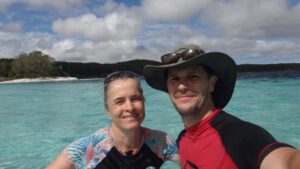
Jude and Jon at Lake McKenzie – the famous beach on Fraser Island because of its crystal clear turquoise water and white sand.
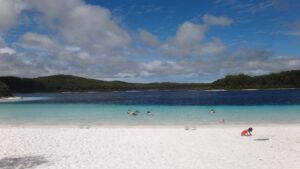
Lake McKenzie – you can see why there are always lots of people trying to get their perfect Instagram photo here….
Finally we also managed to sit in the famous Champagne Pools on K’gari. On previous visits we were always in that area when the tide was too high. But this time we enjoyed them for a while. The water is quite warm here and it’s a safe way to enjoy the ocean. It’s recommended not to swim in the ocean as there are many sharks. And when we were there the beach was riddled with thousands and thousands of blue bottles (looks like a jellyfish) which carry a nasty sting. Every time a car drove past you could hear the sails of the blue bottles pop under the wheels! But knowing there were lots in the water meant we kept out of the water, as did most others.
Despite spending time to clean up the beaches, we still had plenty of wildlife viewings. We spotted a lone dingo pretty much as soon as we drove off the ferry, and as the dingoes still hope to find some food left by naughty humans around lunch times, several came out of the dunes just as we arrived at Eli Creek (you’re not allowed to feed them or leave any food behind). We watched the dingoes go for a swim in the creek, drink, play and search for food. As it is mating season, one of the males tried to have a go with a female, but he didn’t really know what he was doing and tried from the wrong end. She wasn’t very happy and it showed. They made up with kisses afterwards.
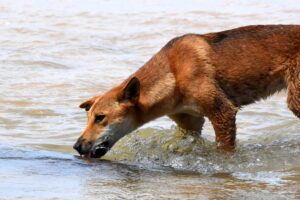
the creek is popular with tourists, but also with the local dingo population as it provides them all year-round with crystal-clear, cool drinking water
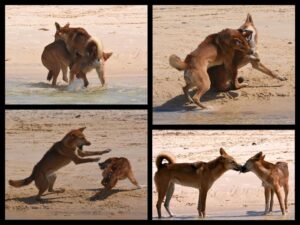
this dingo was keen but didn’t know front from back which resulted in a bit of a scuffle, and then made up with some kisses
We saw lots of birds – Caspian terns, red-capped plovers, several white-bellied sea-eagles, a few Brahminy kites, welcome swallows, willie wagtails, silver gulls, Australasian pipits and of course crows, although not too many. But also quite a few lace monitors, short-necked turtles (mydura macquarii nigra at Lake Allom), several crabs and plenty of mosquitos and march flies (like horse flies, they also bite). Kate spotted an eel in Eli creek and some blue dragons (a type of nudibranch) washed up on the beach, but unfortunately none that were still in one piece (they are very fragile).
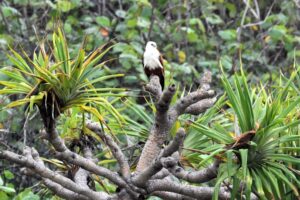
a brahminy kite surveys its surrounding. These birds are mainly scavengers and look for dead fish or crabs, but will also hunt actively for live prey or steal food of other birds
Our camp was located in the dunes of zone 8, we found a lovely spot right next to one of the larger creeks – Orange Creek. These spots are beautiful and you are right on the beach. You need to be dingo aware as there are no fences here, but that’s what we prefer (all the settlements, campgrounds and waste areas are now completely fenced to ensure no dingo can forage for food in and around those areas).
We saw a few footprints but didn’t see a dingo in camp. But we were pretty lucky Ingo noticed a spout in the ocean during breakfast. We grabbed our knockers (binoculars) and camera and watched a feeding frenzy right in front of our camp on both days. Large fish were seen on the hunt, birds were diving in, and we watched one or maybe a few dwarf minke whales (balaenoptera acutorostrata) in the mix too.
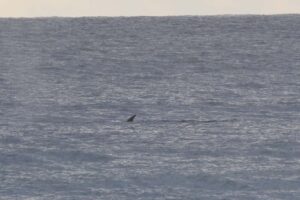
Ingo spotted the first spout, and then we all saw lots more – we were watching a feeding frenzy and a few dwarf minke whales were at the party too
We didn’t spend much time at the Red Canyon or the Pinnacles, but did stop to take some photos at the Maheno ship wreck. She served as a hospital ship in World War I at Gallipoli and was beached in 1935 when the Japanese were towing her to Osaka for scraps and the rope broke during a cyclone. She’s looking a bit worse for wear after being used as a bombing and explosives demolition target during World War II.
There were still plenty of sections of beach with rubbish easily visible from a driving car, which means a lot of smaller stuff can be found if you stop and walk the high tide mark. If you would like to help with the beach clean up please get in touch with Tangaroa Blue. They not only do beach clean ups on Fraser Island but in many other locations which might be close(r) to you. Have a look on their website under events and get in touch. It makes you feel really good and you are doing the world and the environment a huge favour! If you can’t head out with them, consider grabbing your own rubbish bag and clean up somewhere near you. A favourite park, a section of road, everything helps!
Thanks!
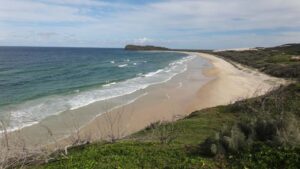
looking across to Indian Head (from Waddy Point), the most eastern point on the island and its only rocky outcrop.
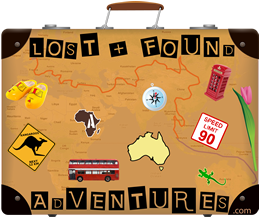
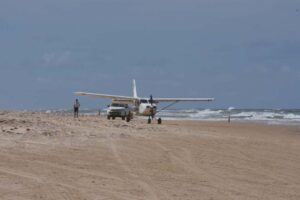
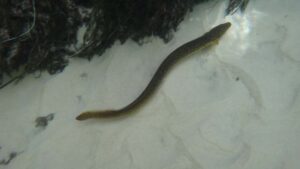
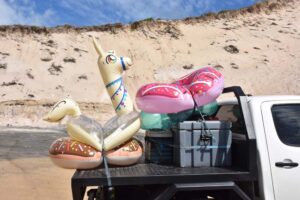
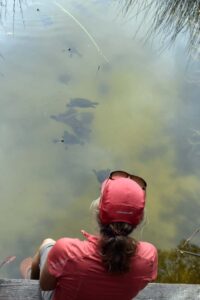
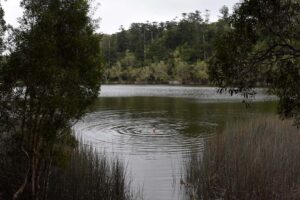
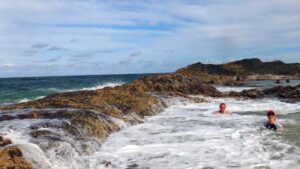
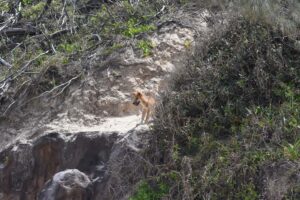
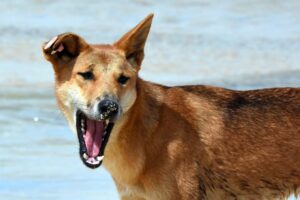
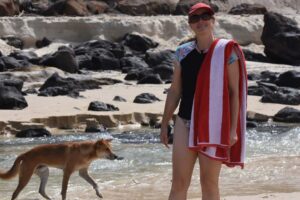
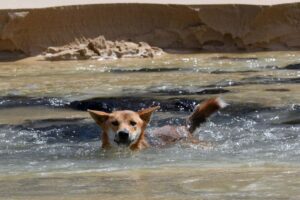
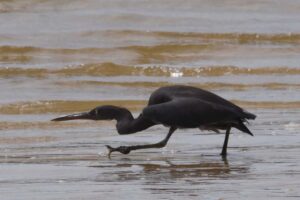
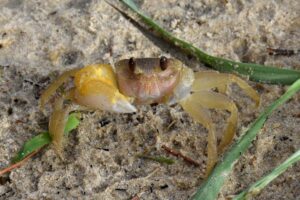
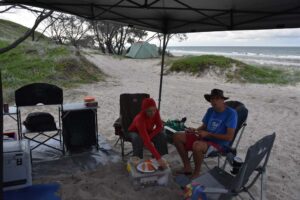
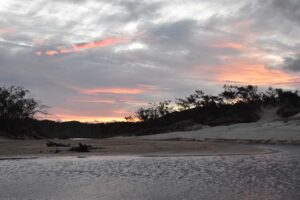
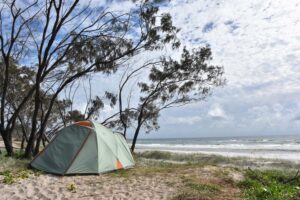
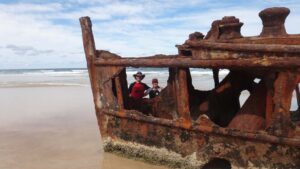
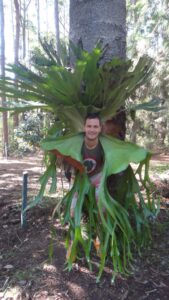
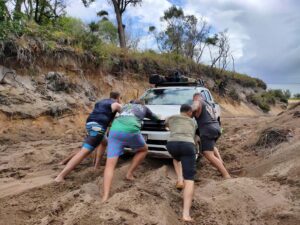
Wow! This looks amazing!!!! We would love to visit that place!. We didn’t go anywhere for my Birthday, but we did take a surfing lesson in the North Sea which we both loved.
Also, I’m pretty sure Jean and I went to the same island in Tanzania and the same lagoon with jellyfish. What an amazing experience!
xx
Kathryn
thanks Kathryn! I am sure you will one day!! Surfing in the North Sea – that sounds cold! Hope you were wearing a wetsuit!! Yes you would have definitely been there. I wasn’t very keen on swimming with them, but did go for a quick swim! Big hug to you both! 😘